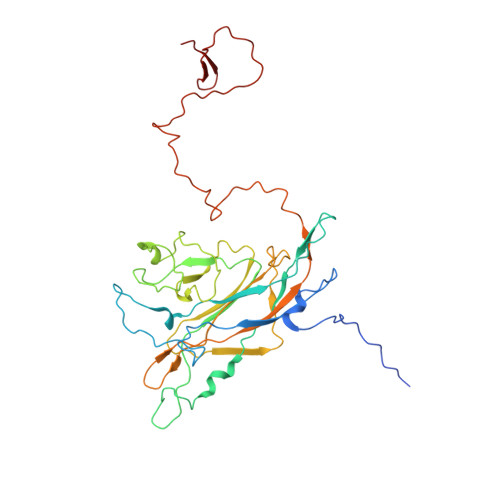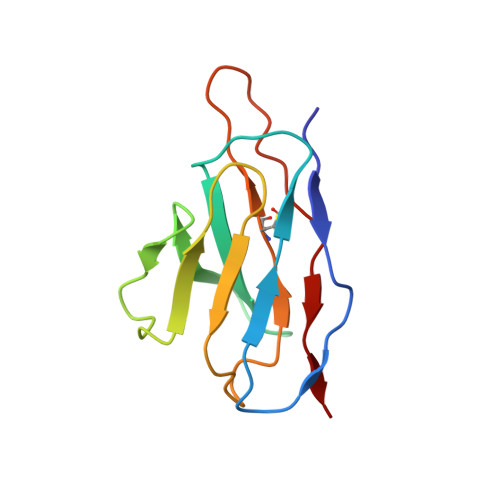Human Memory B Cells Harbor Diverse Cross-Neutralizing Antibodies against BK and JC Polyomaviruses.
Lindner, J.M., Cornacchione, V., Sathe, A., Be, C., Srinivas, H., Riquet, E., Leber, X.C., Hein, A., Wrobel, M.B., Scharenberg, M., Pietzonka, T., Wiesmann, C., Abend, J., Traggiai, E.(2019) Immunity 50: 668-676.e5
- PubMed: 30824324
- DOI: https://doi.org/10.1016/j.immuni.2019.02.003
- Primary Citation of Related Structures:
6GG0 - PubMed Abstract:
Human polyomaviruses cause a common childhood infection worldwide and typically elicit a neutralizing antibody and cellular immune response, while establishing a dormant infection in the kidney with minimal clinical manifestations. However, viral reactivation can cause severe pathology in immunocompromised individuals. We developed a high-throughput, functional antibody screen to examine the humoral response to BK polyomavirus. This approach enabled the isolation of antibodies from all peripheral B cell subsets and revealed the anti-BK virus antibody repertoire as clonally complex with respect to immunoglobulin sequences and isotypes (both IgM and IgG), including a high frequency of monoclonal antibodies that broadly neutralize BK virus subtypes and the related JC polyomavirus. Cryo-electron microscopy of a broadly neutralizing IgG single-chain variable fragment complexed with BK virus-like particles revealed the quaternary nature of a conserved viral epitope at the junction between capsid pentamers. These features unravel a potent modality for inhibiting polyomavirus infection in kidney transplant recipients and other immunocompromised patients.
- Novartis Institutes for BioMedical Research, Basel, Switzerland, Cambridge, MA, USA, and Emeryville, CA, USA.
Organizational Affiliation:


















